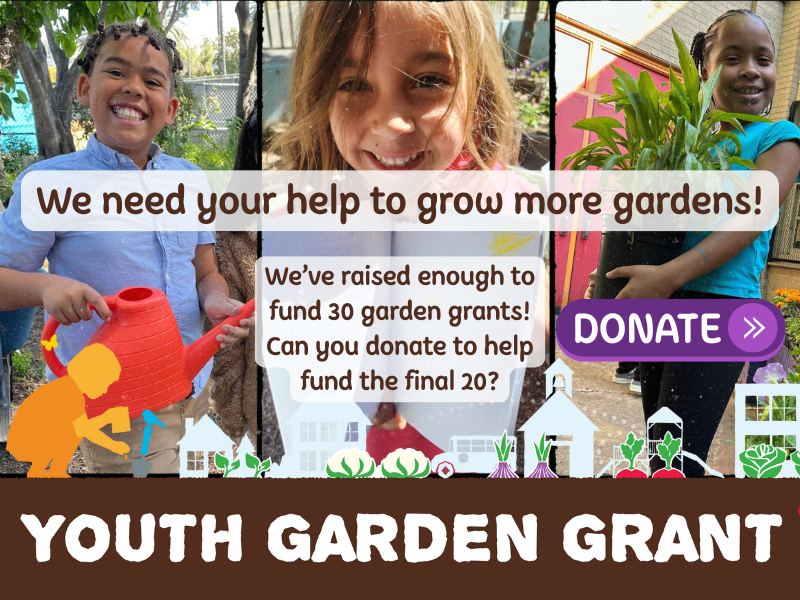Materials
- Journal of any kind (can be purchased, homemade or download the KidsGardening My Pollinator Journal, also available as Diario de polinizadores)
- Pencils, pens, markers and/or crayons
- A comfortable place to sit
Instructions:
- Pollinators play an important role in our ecosystem as many plants rely on them to help move pollen from flower to flower in order to make seeds to produce the next generation. Animals depend on pollinators for the role they play in producing many of our common foods. So who are these essential workers? Begin by researching pollinators in your area with your kids using the introductory information provided in KidsGardening’s My Pollinator Journal. Look up pictures of these garden workhorses online or in books to help with identification.
- Next obtain a pollinator journal. You can buy a journal or make your own by printing out pages of the Pollinator Journal or by simply stapling scrap paper today into a booklet form.
- Before traveling out to your observation station, explain to your kids that loud noises and a lot of movement may scare off the pollinators they are trying to watch. Also remind them that observation is conducted through using the senses, but they need to focus on using sight, hearing, and maybe smell, but in this case not through touch or taste.
- Next plan time to visit your garden or a nearby natural space to observe pollinators in action. Look for areas with large plantings of blooming flowers (the more diversity the better since different pollinators are attracted to different types of flowers). Different pollinators will be active at different times of the day, so if possible, plan multiple visits to the same site compare activity at different times.For optimum observation, choose a comfortable spot to sit (bring a chair or blanket to sit on and on a hot day, look for shade for yourself or bring an umbrella). Plan your observation time based on the age and attention of your kids. Younger children may only sit for a minute or two at a time, while older children may be able to focus for 15 to 30 minutes or maybe more.
- Make note of the temperature and sunlight during your visits and other site conditions like traffic and noise. Compare notes later and see if these environmental conditions seemed to influence your observations.
Although a one-time observation session is certainly a fun exercise, it is a skill that will improve with practice and observations over time help kids to understand patterns and cycles. Make journaling a regular activity to gain the most from your pollinator watch.



